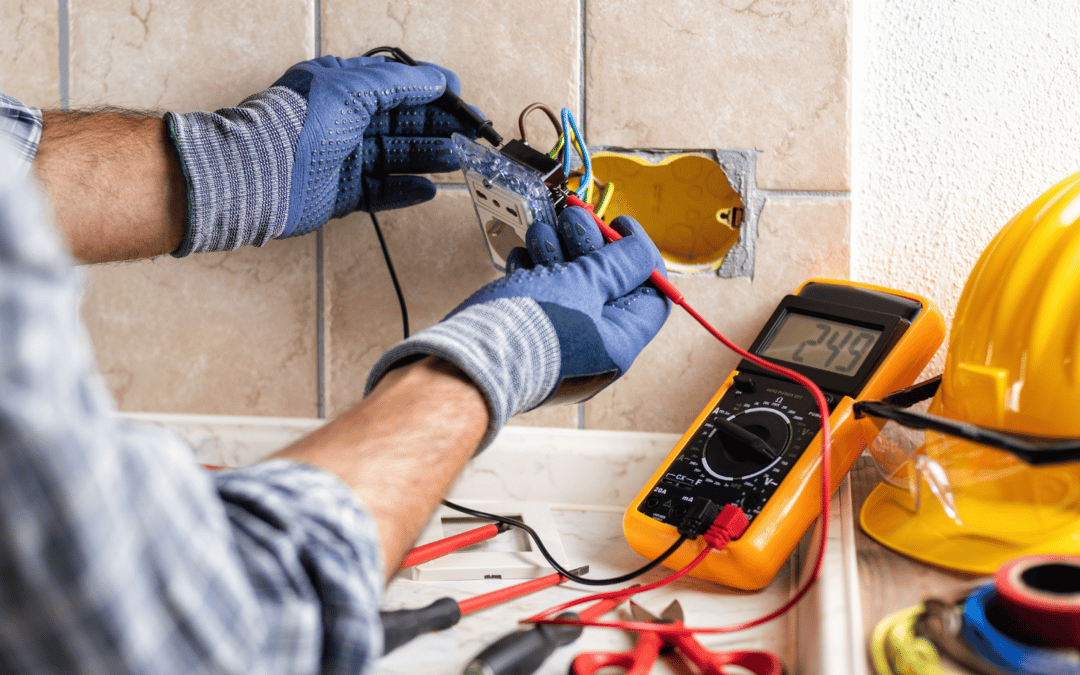Your new home purchase is likely the largest purchase you will make in your lifetime. While some people buy a new home without an inspection, the rest of us want to know exactly what we are getting into.
A complete home inspection—including a thorough electrical inspection—provides peace of mind and allows you to address issues before you sign on the dotted line.
But what are the specific things your new home electrical inspection needs to include? Read below to find out and make sure these items are on the inspection checklist.
1. Check the circuit breaker
Your inspector will make sure the circuit breaker is the appropriate size for your home’s electricity needs and that it is properly mounted to the wall. He or she will also assess the panel for safety and damage and ensure that the breakers trip correctly.
A good inspector will also make sure you know the location of your circuit breaker in the event you need to shut off power to the entire house.
2. Confirm wiring is in good condition
Your inspector should look for and document the location of any wires that are frayed or damaged. These wires present a safety hazard and should be replaced.
3. Confirm GFCI outlets are wired correctly
GFCI stands for ground-fault circuit interrupter. GFCI outlets, commonly found in bathrooms and kitchens where water is present, protect people from electrical shock. Essentially, when a GFCI detects liquid, it shuts off immediately. Your inspector will look for GFCI outlets in your home’s kitchen, laundry room, and bathrooms.
These unique outlets are easy to identify as they include a test and reset button. Your inspector should confirm the GFCI outlets are working properly and, if they are missing from areas that encounter water, will recommend installation. Learn more about GFCI outlets.
4. Make sure the electric meter is free of defects
The electric company uses a meter to record your energy use. That’s how they know how much to bill you! If your meter is not working properly, you could be billed for energy you’re not using. Your inspector should confirm your meter is in good working condition and is recording your electrical use appropriately.
5. Confirm all light switches, fan switches, and outlets work properly
This is a step you can do (or double-check) yourself by flipping switches and plugging a small night light into each outlet to confirm functionality. Be sure also confirm any light fixtures or chandeliers are hanging securely.
6. Confirm outlets are properly grounded
Outlets that are properly grounded protect your appliances and home from dangerous electrical fires. Your inspection should include a test of all outlets to make sure they are grounded and safe for use.
With the help of a device called a multimeter, your inspector will be able to identify any outlets that are not properly grounded and recommend a plan of action to correct the issue. Learn more about grounding here.
Closing thoughts
If you are hiring a professional to conduct your new home electrical inspection (and we recommend that you do), be sure the person you hire is licensed and carries the appropriate credentials to perform the inspection work you need. Ask neighbors and friends for referrals and look at online references.
Depending on the issues your inspection uncovers, you may request that the seller make the necessary repairs, negotiate a lower purchase price to handle the repairs yourself, or walk away from the home altogether. No matter your decision, you can rest easy knowing you are fully informed.
In addition to a new-home inspection, you’ll want to inspect your home’s electrical system every few years and when you do any type of significant upgrade.
Need help inspecting your potential new home in Marietta or Metro Atlanta? Just reach out!

